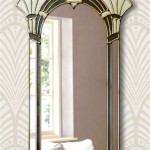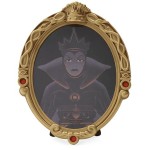Which Mirror Is Used In Headlight Of Vehicles
Vehicle headlights are essential components of road safety, especially during nighttime driving or in adverse weather conditions. They provide illumination, allowing drivers to see the road ahead and be visible to other road users. A critical element within the headlight assembly that contributes to its overall performance is the reflector. The reflector plays a vital role in focusing and directing the light emitted by the bulb, dictating the beam pattern and intensity of the headlight. The type of "mirror," more accurately described as a reflector, utilized in vehicle headlights is crucial to understanding how these essential safety devices function. The shape and material of the reflector have evolved over time, leading to various designs optimized for specific purposes.
The term "mirror" in the context of vehicle headlights is often a simplification. While the reflecting surface within a headlight resembles a mirror, it's technically a reflector. These reflectors are designed to capture the light emitted from the bulb and redirect it outwards, creating a focused beam that illuminates the road. The effectiveness of a headlight largely depends on the efficiency of this reflector in gathering and focusing the light. The design and material chosen for the reflector have a direct impact on the brightness, range, and overall quality of the headlight beam.
The reflectors are not made of glass like traditional mirrors due to the fragility and weight of glass. Instead, they are typically manufactured from plastic or metal substrates coated with a reflective material. This configuration provides durability, is lighter in weight, and can be formed into complex shapes to optimize light distribution. The reflective coating is usually a thin layer of aluminum or silver, applied through processes like vacuum metallization or sputtering. This coating creates a highly reflective surface capable of redirecting a significant portion of the light emitted by the bulb.
Parabolic Reflectors: The Foundation of Headlight Design
For many years, the standard reflector design in vehicle headlights was based on the principles of a parabola. A parabolic reflector is a curved surface with a specific mathematical shape. This shape is crucial because when a light source is placed at the focus of the parabola, the reflector redirects the light rays parallel to the axis of the parabola. This results in a focused, directional beam of light. In a headlight, the bulb is positioned at or near the focal point of the parabolic reflector, causing the light to be reflected forward in a concentrated beam. This design offers good range and brightness, making it suitable for providing visibility at a distance.
The simplicity and effectiveness of parabolic reflectors made them a popular choice for headlights for several decades. However, parabolic reflectors have limitations. The light distribution is not always uniform, and they can produce glare for oncoming drivers. To address these issues, designers began to explore variations and improvements to the basic parabolic design. This led to the development of modified parabolic reflectors and other reflector types.
Early examples of parabolic reflectors were simple in design, but over time, they became more sophisticated. Manufacturers experimented with different parabolic curves and surface textures to fine-tune the beam pattern and reduce glare. Some designs incorporated fluted lenses on the headlight cover to further diffuse the light and improve visibility. Despite these improvements, the fundamental principle of the parabolic reflector remained the same: to focus light emitted from a bulb into a directional beam.
Ellipsoidal Reflectors: Precision and Control
An ellipsoidal reflector, sometimes referred to as a projector headlight, represents a significant advancement in headlight technology. Unlike parabolic reflectors, ellipsoidal reflectors utilize an elliptical shape to focus the light. In an ellipsoidal system, the bulb is positioned at one focal point of the ellipse, and the light is reflected to a second focal point located within the headlight assembly. At this second focal point, a precisely shaped lens is placed. This lens further focuses and projects the light, creating a highly controlled beam pattern.
The primary advantage of ellipsoidal reflectors is their ability to produce a sharp, well-defined beam with minimal glare. The lens provides greater control over the light distribution, allowing designers to create beam patterns that are optimized for specific driving conditions. For example, ellipsoidal headlights can produce a wide, even beam for low-beam settings and a focused, long-range beam for high-beam settings. This versatility makes ellipsoidal headlights a popular choice for modern vehicles.
Ellipsoidal headlights are more complex than parabolic headlights and typically more expensive to manufacture. The precision required in the design and manufacturing of the elliptical reflector and lens contributes to the higher cost. However, the improved performance and safety benefits of ellipsoidal headlights often justify the additional expense. These headlights are commonly found in higher-end vehicles and are increasingly being adopted in mid-range models as well.
The use of ellipsoidal reflectors also allows for more compact headlight designs. Because the light is focused twice, once by the reflector and again by the lens, the overall size of the headlight assembly can be reduced. This is particularly important in modern vehicles, where styling considerations often dictate smaller and more streamlined headlight designs. The combination of performance and compactness makes ellipsoidal reflectors a valuable asset in contemporary automotive lighting.
Free-Form Reflectors: Tailored Light Distribution
Free-form reflectors represent the most advanced type of reflector technology used in vehicle headlights. Unlike parabolic and ellipsoidal reflectors, free-form reflectors are not based on a specific geometric shape. Instead, they are designed using complex computer algorithms that optimize the reflector surface to achieve a desired light distribution pattern. This allows for a level of precision and control that is not possible with traditional reflector designs.
Free-form reflectors can be designed to produce highly customized beam patterns that meet specific performance requirements. For example, they can be used to create a wide, uniform beam for improved visibility in corners or a long-range beam for enhanced visibility on highways. The ability to tailor the light distribution to specific needs makes free-form reflectors a versatile and effective lighting solution.
The design and manufacturing of free-form reflectors require sophisticated computer-aided design (CAD) and computer-aided manufacturing (CAM) technologies. The reflector surface is typically designed using specialized software that simulates the propagation of light rays. The resulting design is then used to create a mold for manufacturing the reflector. The precision of the manufacturing process is critical to ensuring that the reflector performs as intended.
One of the key benefits of free-form reflectors is their ability to minimize glare for oncoming drivers. By carefully controlling the light distribution, designers can direct the light where it is needed while avoiding areas that could cause glare. This improves safety for both the driver of the vehicle and other road users. The use of free-form reflectors is becoming increasingly common in modern headlights, particularly in vehicles equipped with adaptive lighting systems.
Adaptive lighting systems use sensors and actuators to automatically adjust the headlight beam pattern in response to changing driving conditions. For example, the system might adjust the beam angle and intensity based on vehicle speed, steering angle, and the presence of other vehicles. Free-form reflectors play a crucial role in these systems, allowing the headlights to adapt to different situations and provide optimal visibility at all times. The combination of free-form reflectors and adaptive lighting technology represents a significant step forward in automotive lighting.
The choice of reflective material is as important as the shape of the reflector. Aluminum and silver are the most common materials used for the reflective coating. Both offer excellent reflectivity, but silver generally provides slightly better performance. However, silver is also more expensive and more susceptible to corrosion. To protect the silver coating, a protective layer is often applied. Aluminum, on the other hand, is more durable and resistant to corrosion, making it a popular choice for many headlight reflectors.
The production process for headlight reflectors involves several steps. First, the plastic or metal substrate is molded into the desired shape. Next, the substrate is cleaned and prepared for coating. The reflective coating is then applied using vacuum metallization or sputtering. In vacuum metallization, the substrate is placed in a vacuum chamber, and the reflective material is vaporized and deposited onto the surface. Sputtering involves bombarding a target of the reflective material with ions, causing atoms to be ejected and deposited onto the substrate. Both processes create a thin, uniform coating of the reflective material.
After the reflective coating is applied, a protective layer may be added to prevent corrosion and abrasion. This layer is typically a thin film of clear lacquer or other protective material. The reflector is then inspected to ensure that it meets the required specifications. Any defects or imperfections are corrected before the reflector is assembled into the headlight unit.
Which Mirror Is Used In The Headlight Of A Car Quora

Which Type Of Mirror Is Used In Headlights Vehicles

Car Headlights

Which Mirror Is Used In The Headlights Of A Car
Why Is A Parabolic Mirror Preferred Than Concave As Headlight Quora

State The Type Of Mirrors Used For I Headlights And Ii Rearview In Cars Motorcycles Give Reason To Justify Your Answer Each Case

Why Headlights Used Concave Mirror

Why Concave Mirror Used In Headlights Brainly
How Is A Convex Lens Used As Headlights In Vehicles Quora

Why Are Concave Mirrors Used In Headlights Socratic








